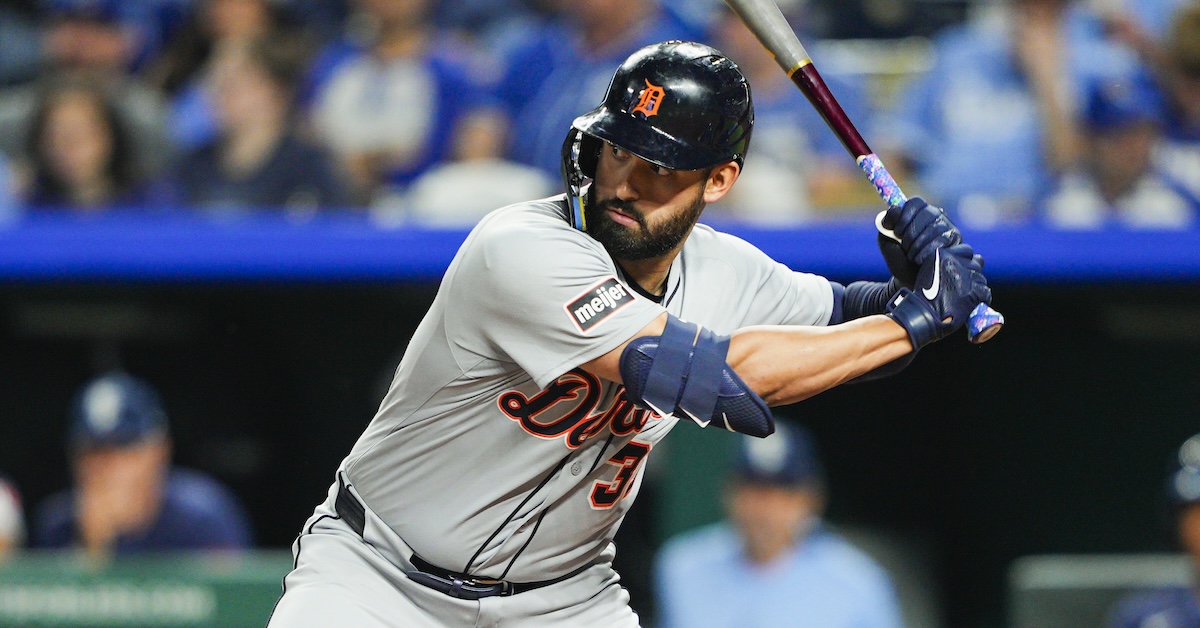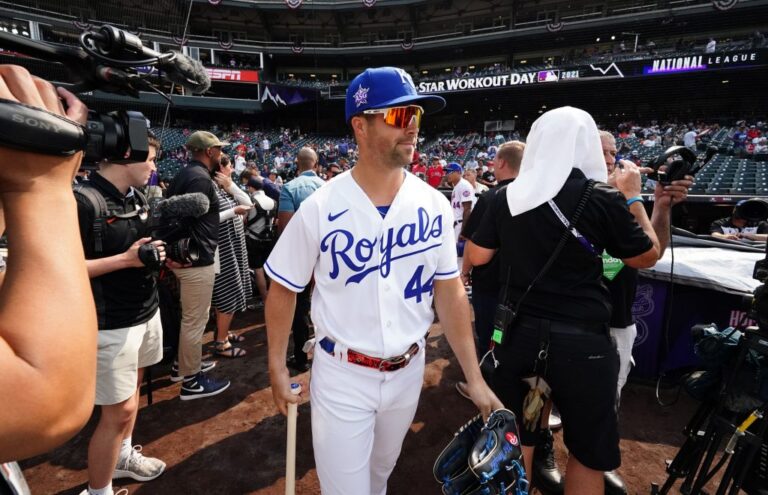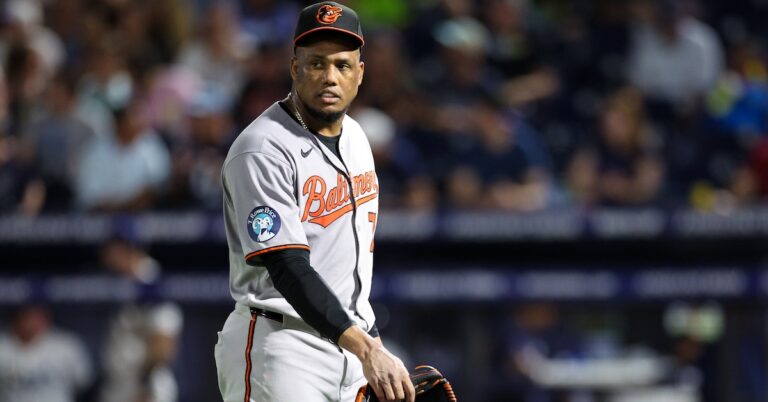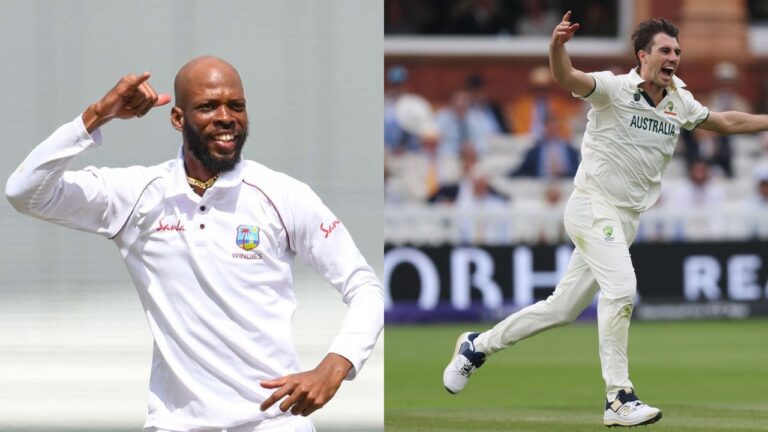

When Riley Greene debuted in 2022, he had a tiny bit of a strikeout problem. His overall line – .253/.321/.362 in cavernous Comerica Park – was roughly league average, but it would have been better than that if he had struck out less than 28.7% of the time. Over the subsequent two years, he reined that issue in some: 27.4% in 2023 and 26.7% in 2024. He also got better at the plate while doing so. And this year, he’s off to a scorching start, .291/.345/.530 with a career-best 145 wRC+. So he conquered the strikeout demons, right? Wrong. He’s striking out a ghastly 30.7% of the time. This requires further explanation.
One of the classic paradoxes driving the way baseball looks today is that strikeouts don’t appear to be as bad for hitters as one might think. There’s essentially no correlation between batter strikeout rate and overall batter production. You could crunch the numbers to verify that – or you could just consider Luis Arraez and Aaron Judge. But while we pretty much all know this by now – the Judges and Harpers and Ohtanis of the world crack a few eggs while they’re depositing omelets over the outfield fences – it doesn’t feel as true at the extreme high end of the spectrum. After all, Joey Gallo’s outlandish 38% strikeout rate obviously held him back. But Gallo is the easiest example, and discussing his strikeout woes doesn’t quite prove a whole lot. So let’s look at the 10 hitters striking out most this year:
Most Strikeout-Prone Hitters, 2025
Aside from Greene, that’s not an impressive group. Stowers is the best of the bunch, but even including him, the aggregate statistics are quite poor. This isn’t some list of overmatched hitters doing absolutely nothing right, ether; there’s fearsome power here pretty much across the board. They’re just striking out so much that the overall package doesn’t work. So why does Greene look so different from the rest?
It starts, as MLB.com’s Jared Greenspan pointed out, with aggression. Greene spent his first years in the majors as a patient hitter, chasing less often than average and taking a few pitches in the zone as the price of his patience. My favorite proxy for hitter aggression is how often they swing at first pitches in the strike zone. The league as a whole swings at about 45% of such pitches. Greene was right around there in his first three years in the big leagues: 42.4%, 45.2%, 46.1%, respectively. Then he decided to stop letting those cookies go by. This year, he’s swinging at 56% of first-pitch strikes.
The reason for this is simple: These are good pitches to hit. From 2022 through 2024, Greene put up great numbers when he made contact with a first-pitch strike. He batted .425 and slugged .770 on them, with underlying contact metrics to match. He’s doing even more damage this year, .448 with a .966 slug. More importantly, though, he’s damaging these pitches more frequently because he’s swinging at them more often. These tend to be the best pitches to hit all plate appearance; why not take a big hack at them?
There’s a cost to doing this. Greene is also swinging more often at bad first pitches; his 0-0 chase rate is up to 18.5% from roughly 12% in his career before the season began. That sounds bad, but consider that he’s upped his in-zone swing rate by 10 percentage points. Because of this aggression, he is no longer taking as many hittable pitches for strikes. Take a look at how often he’s gotten ahead, fallen behind, and put the ball in play over time:
Riley Greene’s First-Pitch Results
| Year | In Play | 0-1 | 1-0 |
|---|---|---|---|
| 2022 | 8.8% | 52.1% | 39.0% |
| 2023 | 8.0% | 49.9% | 42.2% |
| 2024 | 9.1% | 51.2% | 39.7% |
| 2025 | 10.2% | 49.1% | 40.7% |
As you can see, this has been a great trade-off. He’s putting the ball in play more frequently than ever and falling behind less often as a result. Aggression pays, particularly early in the count and particularly for hitters as powerful as Greene.
That smidgen of extra production against hittable pitches in early counts helps explain some of Greene’s boosted production on batted balls this year – his .525 wOBACON and .504 xwOBACON are both career highs (here’s why I like these BACON stats). Want to mash the ball? Aim at easier pitches.
That said, Greene’s aggressive approach to pitches in the zone has come with some swing-and-miss downside. Break the plate down into more than just “in or out” and you can see the trade-off more clearly:
Riley Greene’s Swing% By Zone
| Year | Heart | Shadow-In | Shadow-Out | Chase | Waste |
|---|---|---|---|---|---|
| 2022 | 69.3% | 58.3% | 44.7% | 22.5% | 4.0% |
| 2023 | 75.2% | 60.7% | 39.7% | 21.8% | 5.9% |
| 2024 | 72.9% | 58.3% | 38.0% | 17.5% | 3.7% |
| 2025 | 78.0% | 64.3% | 46.6% | 25.7% | 5.9% |
Naturally, Greene is swinging more at everything in his attempt to drive more hittable pitches. That makes sense; he didn’t simply wave a magic wand and start swinging at the good ones more without adjusting his approach to all pitches. He’s not hacking blindly at everything off the plate, or even close to that, but it makes plenty of sense that he’s taking a few more ill-advised swings along with all the extra good ones.
Normally, you’d expect this to be a self-correcting loop. Greene gets more aggressive, so pitchers leave the strike zone more often, which tilts Greene back toward selectivity as he gets ahead in the count more often and can choose pitches to hunt. Early in the count, pitchers are treating him about the same as always – he’s powerful, and so they try to nibble around the corners of the zone, accepting extra balls in exchange for avoiding meatballs. But with two strikes, particularly if you exclude 3-2 counts, they’re not giving him so much as the time of day. He sees strikes on a mere 35.3% of 0-2, 1-2, and 2-2 counts, one of the lowest marks in baseball.
That feels like a wise adjustment by opposing pitchers. This guy is powerful and wants to swing, so why bail him out by giving him something to hit? So he faces a steady diet of breaking balls in the dirt, high fastballs, sinkers off the plate in, basically everything you can think of. There’s an adjustment to be made here, starting aggressive and dialing it back with two strikes instead of maintaining that aggression all the way through. In 2024, he chased 30.3% of the time in those counts. This year, he’s up to 39.1%. That’s from “much less than average” to “more than average” if you’re keeping score at home.
The end result of this newfound aggression and pitchers’ avoidance of the zone is that Greene is striking out on 22.8% of the two-strike pitches he sees, the highest mark of his career. He’s also getting to two-strike counts more frequently thanks to his early-count swings. He’s fouling more pitches off than ever before, as well. That comes with the swing-hard-early territory; Greene will happily take some foul balls in exchange for all the damage he’s doing when he keeps the ball fair.
As far as I can tell, Greene is like no one else in the high-strikeout cohort. He’s not up there because he’s a helpless hacker who can’t make contact. He has a good sense of the strike zone, one he’s displayed in multiple seasons. His swing is geared for power, so he’ll always swing over his fair share of balls, but plenty of hitters with power swings still have good two-strike approaches. Greene just hasn’t put together his new early-count plan – attack pitches in the zone and accept a few extra chases to do it – with a two-strike approach. He’s chasing too often, and as best as I can tell, it’s because he’s swinging more frequently than ever before early in the count. It’s tough to switch mental gears, particularly while you’re learning a new approach, and I think Greene has fallen into that trap so far.
All this is to say Greene is hardly doomed to strike out 30% of the time for the rest of the year. In fact, I think his early-count aggression will end up lowering his strikeout rate, not raising it. He’s giving pitchers fewer easy options by hunting drivable pitches early. And in previous seasons, he’s already demonstrated the ability to tighten up and manage the zone late in the count. He’s still just 24 years old and only in his sixth year of professional baseball (excluding the canceled 2020 minor league season). Unlike most of the players who strike out as often as he does, he seems to have no fatal flaw that will keep him in that group. It’s just a matter of making all the parts of his ever-improving game work together, and I definitely wouldn’t bet against him fixing it sooner or later.
It’s a credit to his incredible talent that his horrid strikeout rate hasn’t really mattered so far. I love his new approach this year overall. When you have this level of power, letting early-count strikes go by is a cardinal sin. I think he’ll figure out how to modulate that as necessary – when he gets behind and pitchers start fishing for strikeouts, basically. But if you’re looking for a testament to Greene’s talent, I can’t think of any better one than his performance this year. He’s striking out a truly unconscionable amount while he tries to change the way he works at the plate, and yet it doesn’t matter. He’s just that powerful, and even though he’s aggressive, he’s not flailing pointlessly at pitches out of the zone and blunting his results on contact. The strikeouts will almost certainly come down. The new, early-count damage? That’s here to stay.






